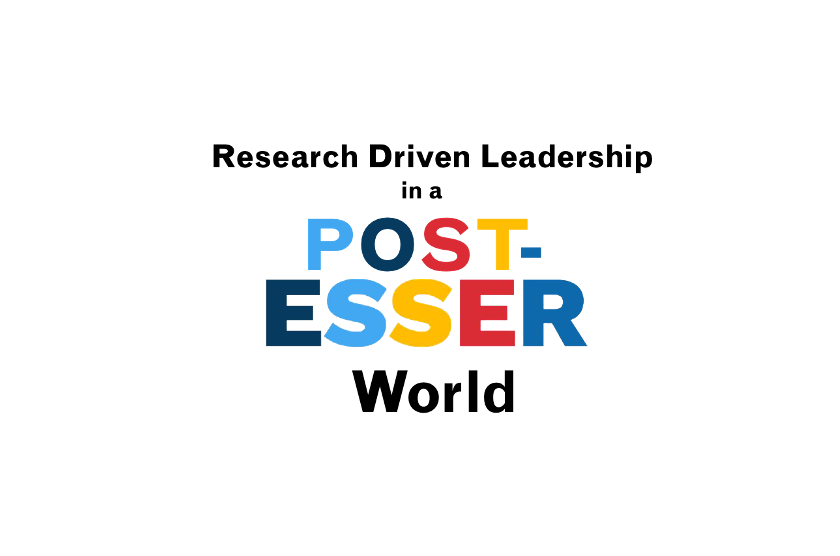Spark School Transformation: The Power and Potential of a School-Improvement Sprint

As school leaders we want to invite new, innovative strategies to elevate teaching and learning. How we balance this without overwhelming an already taxed staff is a true leadership challenge. Initiative fatigue is real.
If we look outside education, we find an approach, the Design Sprint, that offers promise and potential. Reframed for addressing educational challenges, the School-Improvement Sprint offers a structured path to drive meaningful change within the context of ever-present demands and limited resources.
What is a School-Improvement Sprint?
A School-Improvement Sprint is an 8-week intensive process, inspired by Design Sprints, a methodology pioneered at Google Ventures to foster rapid innovation and problem-solving. Design Sprints have been successfully applied in various industries to accelerate product development, streamline processes, and tackle complex challenges.
In schools, the “sprint” framework allows educators to test innovative ideas quickly. The sprint brings together a diverse team of educators, administrators, students, and other stakeholders to address a specific challenge. The focus is short-term, and narrowly confined, thus addressing concerns of initiative overreach that frustrate educators. The goal is to try new solutions to vexing challenges and quickly learn what works and doesn’t work.
The School-Improvement Sprint fosters innovation through:
- Focused Problem-Solving: By zeroing in on a specific challenge and setting clear goals, School-Improvement Sprints eliminate distractions and create a sense of urgency, fueling creativity and productivity.
- Collaboration and Diversity: Bringing together diverse perspectives ensures that solutions are considered from all angles, leading to more innovative and robust outcomes.
- Rapid Prototyping and Testing: By quickly creating and testing tangible ideas, School-Improvement Sprints allow teams to gather valuable feedback early in the process, mitigating risks and accelerating learning.
- User-Centric Approach: School-Improvement Sprints prioritize the needs and experiences of teachers and students, ensuring that solutions are relevant, practical, and impactful.
The 8-Week School-Improvement Sprint Journey
- Week 1: Align & Identify
Once the “Sprint Team” of diverse stakeholders is identified, the sprint is kicked off with a dynamic full-day workshop. The team will:- Identify the Challenge: Clearly articulate the problem or opportunity you wish to address.
- Brainstorm Innovative Solutions: The short-term, focused nature of sprints allows testing of unique, out-of-the box ideas.
- Focus and Prioritize: Evaluate and select the most promising solution to implement that has the greatest potential impact on teaching and learning.
- Develop Implementation Plan: Determine the process and steps necessary to implement chosen solution.
- Establish Key Metrics: Determine the data that will be collected during the implementation phase of the sprint.
- Week 1: Align & Identify
- Weeks 2 – 7: Implement & Track
Test, iterate, and learn.- Pilot: Implement your solution in a controlled environment with a small group.
- Gather Valuable Insights: Collect feedback and data from the pilot to assess effectiveness.
- Analyze and Adapt: Scrutinize results and make necessary adjustments to your solution.
- Check-in: Hold weekly sprint team meetings to support each other, evaluate progress, and address potential roadblocks.
- Weeks 2 – 7: Implement & Track
- Week 8: Review & Reflect
At the end of the sprint, the team comes back together to do a deep dive into the results.- Review data: What story do the key metrics and data captured tell.
- Determine next steps: Assess the best path forward. Options could include adjusting the solution and running another sprint; rolling out the solution to the broader school community; going back to the drawing board.
- Communicate: Share what was learned with the broader community of stakeholders, both successes and failures.
- Week 8: Review & Reflect
The Essential Role of a Skilled Facilitator
A skilled facilitator is important to the success of a School-Improvement Sprint. The staff are the experts, implementing the sprint. The facilitator acts as the guide, steering the process, ensuring the team remains focused, productive, and aligned. Their expertise encompasses:
- Process Management: Navigating the team through the Sprint stages, overcoming obstacles, and maintaining momentum.
- Creative Facilitation: Fostering an environment where collaboration and innovation flourish.
- Equitable Participation: Managing diverse perspectives and making sure the process is inclusive and everyone feels heard and valued.
- Decision-Making: Guiding the team towards consensus and actionable outcomes.
- Time Management: Optimizing productivity within the workshops and meetings throughout the 8-week timeframe.
Share Your Thoughts!
The School-Improvement Sprint, built upon the proven foundation of Design Sprints, holds immense potential to transform teaching and learning. I’m eager to hear your thoughts on this approach. Have you experimented with similar methods in your school? What challenges and successes have you encountered?
Share your feedback and comments – let’s spark a conversation about how we can collectively innovate and create thriving learning environments for all students.
Posted by: Greg Runyan
Recommend0 recommendationsPublished in K12Voices, Leadership Voices, School Improvement





Responses